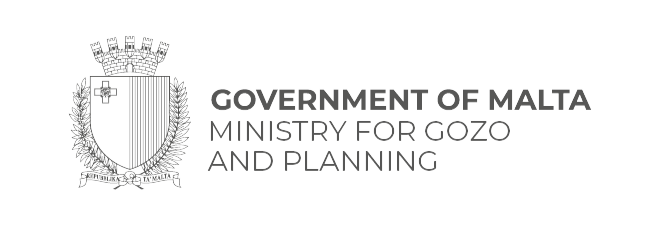Iż-Żebbuġ lies stretched on a tranquil hill in the north of Gozo with panoramic views of the Gozitan countryside and the Mediterranean. It has a remarkable parish church, some beautiful little street niches (shrines) and a reputation for producing skilled traditional craftsmen. Iż-Żebbuġ means olives or olive trees in Maltese, suggesting there were once olive groves or olive presses here.
On a slope on the edge of the village, facing Ta’ Ġurdan Lighthouse and known as is-Sagħtrija, (The Wild Thyme Field) a considerable deposit of onyx was found in 1738. Many churches in Malta and Gozo have works of art made from this onyx but iż-Żebbuġ church is by far the most spectacular. It is covered with this semi-precious stone. The high altar, the choir, and the baptistery are all sculpted out of this onyx.
Iż-Żebbuġ became an independent parish in 1688 and the building of the present church (without the onyx) started in 1690. The church, dedicated to Santa Marija (St Mary) the Assumption, was consecrated in 1726. The Cathedral apart, it is the oldest parish church to be consecrated in Gozo.
Worthy of special mention is the altarpiece of the Immaculate Conception in a chapel in the left transept, known by the locals as tal-Virtut (of the miracles). Local folklore has it that the radiant face of the Virgin turns yellowish and pale before an impending natural catastrophe. It is also said that one day, when some corsairs dared to devastate the countryside as far as the village, a lady that resembled the image in the altarpiece appeared on the spot hurling stones to repel the enemy.
Iż-Żebbuġin (natives of iż-Żebbuġ ) are known for the high quality of their bizzilla (lace); nsiġ (weaving); and kutri tas-suf (sheep’s wool blankets). The surrounding countryside is ideal for shepherds. The milk from their sheep produces some of Gozo’s finest gbejniet (traditional little cheeses).
The villagers are very proud of their religious heritage and carefully maintain the village’s street niches (shrines). The best is that of il-Madonna Omm tal-Ħniena, better known as taċ-Ċiċri.
The bays of Marsalforn, Qbajjar and Xwejni are all within easy reach of this picturesque village. All shelter local fishing boats and are popular places for swimming and diving, amongst locals and tourists alike.
Accessible for persons with a disability.
Iż-Żebbuġ lies stretched on a tranquil hill in the north of Gozo with panoramic views of the Gozitan countryside and the Mediterranean. It has a remarkable parish church, some beautiful little street niches (shrines) and a reputation for producing skilled traditional craftsmen. Iż-Żebbuġ means olives or olive trees in Maltese, suggesting there were once olive groves or olive presses here.
On a slope on the edge of the village, facing Ta’ Ġurdan Lighthouse and known as is-Sagħtrija, (The Wild Thyme Field) a considerable deposit of onyx was found in 1738. Many churches in Malta and Gozo have works of art made from this onyx but iż-Żebbuġ church is by far the most spectacular. It is covered with this semi-precious stone. The high altar, the choir, and the baptistery are all sculpted out of this onyx.
Iż-Żebbuġ became an independent parish in 1688 and the building of the present church (without the onyx) started in 1690. The church, dedicated to Santa Marija (St Mary) the Assumption, was consecrated in 1726. The Cathedral apart, it is the oldest parish church to be consecrated in Gozo.
Worthy of special mention is the altarpiece of the Immaculate Conception in a chapel in the left transept, known by the locals as tal-Virtut (of the miracles). Local folklore has it that the radiant face of the Virgin turns yellowish and pale before an impending natural catastrophe. It is also said that one day, when some corsairs dared to devastate the countryside as far as the village, a lady that resembled the image in the altarpiece appeared on the spot hurling stones to repel the enemy.
Iż-Żebbuġin (natives of iż-Żebbuġ ) are known for the high quality of their bizzilla (lace); nsiġ (weaving); and kutri tas-suf (sheep’s wool blankets). The surrounding countryside is ideal for shepherds. The milk from their sheep produces some of Gozo’s finest gbejniet (traditional little cheeses).
The villagers are very proud of their religious heritage and carefully maintain the village’s street niches (shrines). The best is that of il-Madonna Omm tal-Ħniena, better known as taċ-Ċiċri.
The bays of Marsalforn, Qbajjar and Xwejni are all within easy reach of this picturesque village. All shelter local fishing boats and are popular places for swimming and diving, amongst locals and tourists alike.
Accessible for persons with a disability.
OPEN IN GOOGLEMAPS
















